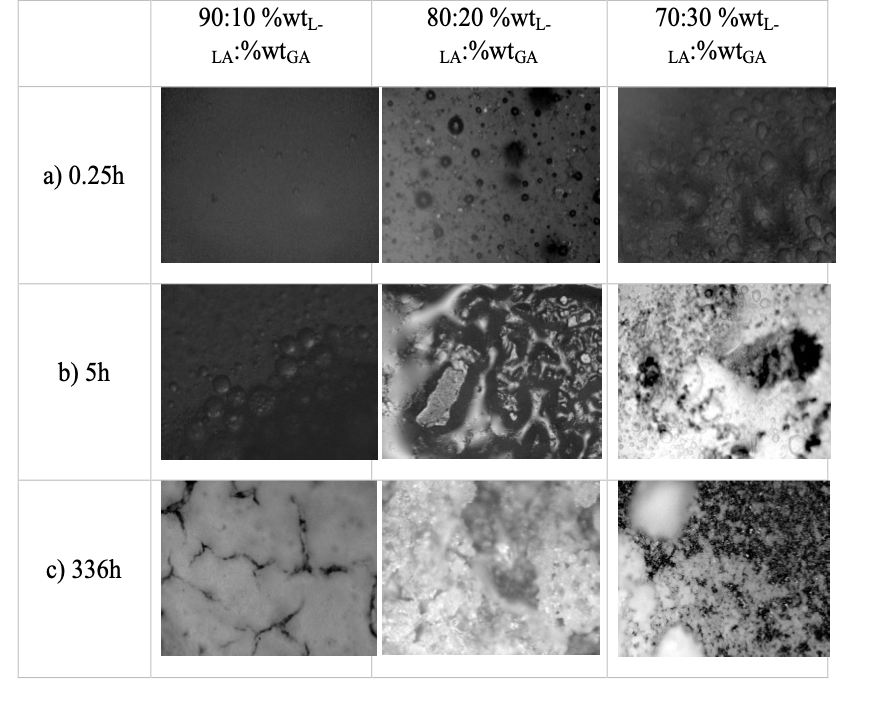 |
|
In this work, three types of poli(L-lactic-co-glycolic acid) copolymers (PLLGA) with different lactide to glycolide ratio (70:30, 80:20 and 90:10 %wt.L-LA:%wt.GA) were synthesized. The materials were characterized by known techniques. The degradation study of PLLGA was made in saline solution and followed by molecular weight change and mass loss percentage. The results showed that PLLGA degradation followed a first order kinetic. Prednisone (immunosuppressive drug) was incorporated into polymeric matrix. The release process was quantified by drug concentration change in the saline solution using UV spectroscopy at 240nm. In this way, diffusion coefficients of prednisone into copolymers were calculated. The results showed that prednisone released was governed by two phenomena: diffusion and degradation. The drug released kinetic was adjusted at two models proposed for biodegradable systems: the model of Higuchi and the model of Charlier. Drug diffusion coefficients were higher in the copolymers with higher percentage of glycolic acid, and they were increasing as the degradation process was progressing. The cytotoxicity assay evidenced that PLLGA copolymers and PLLGA degradation products were not toxic in endothelial cells. Finally, a 3D printer was built and programmed to explore the stent fabrication to be used as potential polymeric matrix in coronary stents.
Keywords: PLLGA copolymers, degradation, desorption, prednisone, kinetic, cytotoxicity, polymeric stent.
|
|
 |

